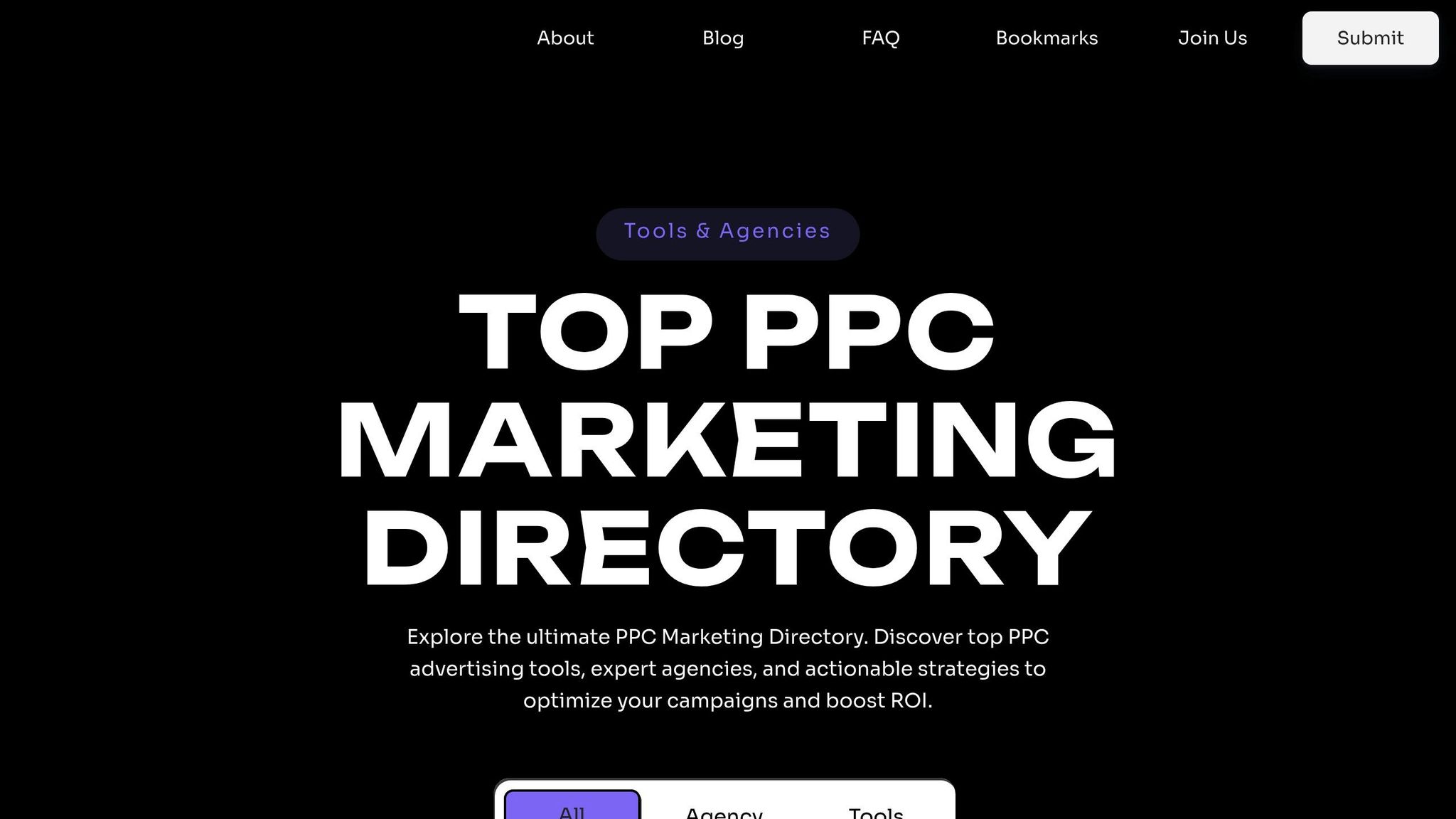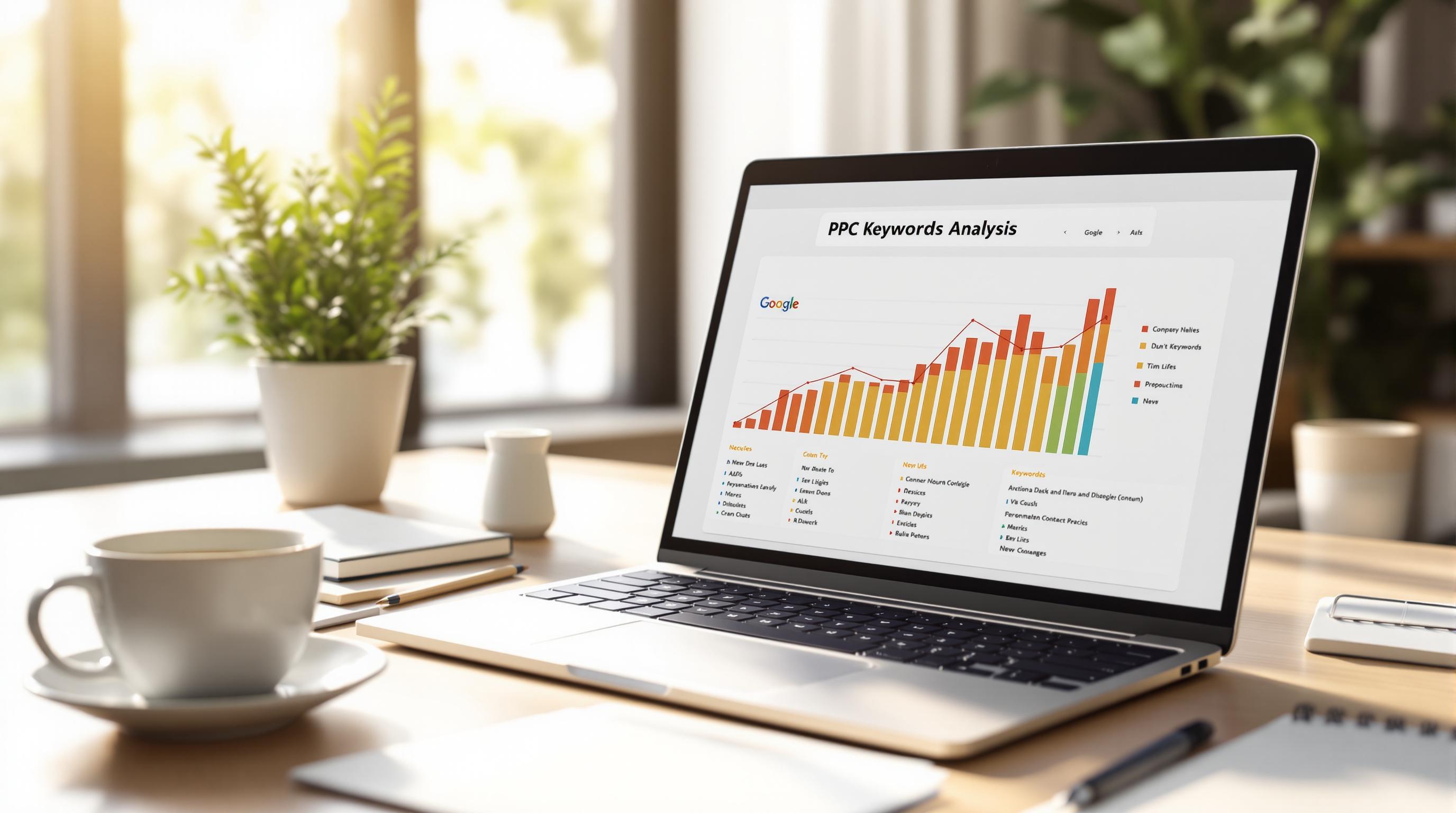Reallocating your PPC budget can improve ROI and prevent wasted ad spend. Here's how to do it effectively:
- Focus on Key Metrics: Track CTR (Click-Through Rate), Conversion Rate, CPC (Cost Per Click), ROAS (Return on Ad Spend), and Impression Share to guide budget decisions.
- Know When to Adjust: Change budgets during sudden performance shifts, seasonal trends, market changes, or when launching new products.
- Use Tools for Insights: Automated tools and dashboards help monitor performance, set alerts, and make data-driven adjustments.
- Prioritize High Performers: Shift funds to campaigns with strong metrics and cut back on underperformers.
- Plan for Seasonal Trends: Prepare for peak periods by analyzing past data and adjusting bids and creatives ahead of time.
PPC Metrics That Matter Most (And Least ) | PPC Jargon ...
Must-Track Metrics for Budget Changes
When adjusting PPC budgets, keeping an eye on the right metrics ensures your decisions are based on data. These metrics are key to making informed changes that improve campaign outcomes:
Click-Through Rate (CTR)
CTR measures how well your ads engage your audience. A higher CTR means your ads are resonating, making them strong candidates for increased investment. Tools like those in the Top PPC Marketing Directory can help you monitor this metric in real time, allowing for quick adjustments when needed.
Conversion Rate
This metric shows how effectively clicks turn into desired actions, like purchases or sign-ups. Campaigns with high conversion rates - especially when paired with low CPC - should be prioritized for additional budget.
Cost Per Click (CPC)
Keep an eye on CPC to detect cost changes. A sudden increase could signal the need to review your bidding strategy and reallocate funds to maintain efficiency.
Return on Ad Spend (ROAS)
ROAS tells you how much revenue you're earning for every dollar spent. Focus on campaigns with consistently high ROAS to ensure you're maximizing profitability.
Share of Available Impressions
Impression share highlights untapped potential in your campaigns. If high-performing campaigns are limited by budget and show a low share of available impressions, it’s a sign to consider increasing investment. Key components to review include:
- Lost impression share due to budget
- Lost impression share due to rank
- Current impression share
Quick Budget Adjustment Methods
When you need to make immediate budget changes, having a clear plan ensures your campaigns stay effective. Tools like Top PPC Marketing Directory can help you make smart, data-driven budget reallocations.
Shifting Funds to High Performers
Quickly redirect funds to campaigns that are delivering the best results. Here's how:
- Cut back on spending for campaigns with low conversion rates
- Keep budgets steady for essential brand-related terms
- Use automated rules to avoid overspending on underperforming campaigns
Afterward, analyze performance across all ad platforms to fine-tune your budget distribution.
Balancing Spend Across Platforms
Evaluate how each ad platform is performing and adjust your budget based on results. Put more money into channels that are driving strong outcomes, but don't neglect platforms that are critical to your overall strategy.
To go deeper, consider how timing and geographic data can enhance your approach.
Targeting by Time and Location
Maximize your budget by focusing on the right times, days, and places. Use these strategies:
- Allocate more budget during peak hours
- Raise bids on days with higher performance
- Invest more in regions with better conversion rates
- Increase spending during periods of seasonal demand
Automated tools can help you make these adjustments quickly and effectively, ensuring your campaigns remain efficient.
sbb-itb-89b8f36
Budget Management Tools
Effective budget management tools transform data-driven insights into actionable steps, helping you make swift adjustments without sacrificing campaign performance.
Automated Budget Tools
Automated tools handle repetitive tasks, allowing you to focus on high-level strategy. These systems:
- Continuously monitor campaign performance
- Adjust bids using real-time data
- Shift budgets across campaigns as needed
- Pause ads that aren't delivering results
The Top PPC Marketing Directory offers solutions that streamline budget management while keeping spending in check. It also provides performance alerts to help you respond to changes as they happen.
Setting Performance Alerts
Custom alerts help you stay on top of key campaign changes. These alerts cover:
Campaign Monitoring
- Daily spending limits
- Drops in performance
- Shifts in conversions
- Budget pacing updates
Account Overview
- Budget usage
- Performance trends
- Changes in competitive bids
- Updates to quality scores
Performance Tracking Dashboards
Dashboards give you a clear, centralized view of critical metrics, such as:
- Budget data like spend, ROAS, and CPC
- Performance stats like CTR, conversions, and quality scores
- Competitive insights like impression share and average position
- Historical trends for better analysis
Customizable dashboards let you focus on the metrics that matter most to your goals. For additional tools, check out the resources offered by the Top PPC Marketing Directory.
Top PPC Marketing Directory Resources

The Top PPC Marketing Directory enhances your toolkit with features like:
- Advanced testing tools
- Cross-platform optimization options
- Landing page improvement resources
- Integrated performance tracking
These tools work seamlessly with major ad platforms, giving you centralized control and ensuring accurate budget allocation across all channels.
Long-Term Budget Management Tips
Managing a PPC budget over the long term takes a structured approach that relies on ongoing adjustments and decisions based on data.
Setting Performance Benchmarks
Review past campaign data to establish achievable benchmarks. Focus on metrics like daily CTR, CPC, conversion rates, and monthly ROAS. Use your best-performing campaigns as a guide, factoring in seasonal trends and competition. These benchmarks will help you make informed, steady changes to your PPC strategy.
Making Small, Regular Changes
Once benchmarks are set, make small tweaks to improve performance over time. Regular, incremental changes allow you to test outcomes and adapt quickly to market shifts. This approach minimizes risks to successful campaigns and keeps results consistent. Automated tools, such as those found in the Top PPC Marketing Directory, can assist in maintaining performance.
Planning for Seasonal Changes
Prepare for seasonal shifts by analyzing past trends and identifying key periods like holidays or industry-specific peaks. Update bidding strategies and ad creatives well ahead of time to take advantage of increased demand during these high-impact moments.
Summary
Key Takeaways
Reallocating a PPC budget effectively requires keeping a close eye on metrics like CTR (Click-Through Rate), conversion rate, CPC (Cost Per Click), and ROAS (Return on Ad Spend). Tracking your share of available impressions ensures your campaigns stay competitive. Using historical data to set benchmarks and leveraging tracking dashboards helps identify the right moments to adjust budgets. These tools make it easier to fine-tune campaigns with precision.
Leveraging Data for Better Performance
By focusing on these metrics, you can make smarter, data-driven decisions to improve campaign results. Real-time tracking and performance alerts allow for quick budget adjustments that boost ROI. Testing small changes regularly helps refine your approach without jeopardizing performance. Keep an eye on seasonal trends to stay ahead of any sudden shifts in demand.
The Top PPC Marketing Directory simplifies budget management by offering automated tracking and optimization tools. This lets marketers focus on running data-informed campaigns while ensuring budgets are allocated efficiently.


